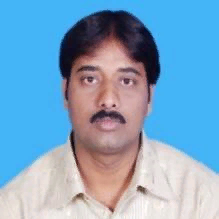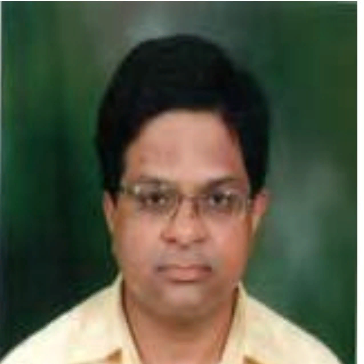International Journal of Image, Graphics and Signal Processing (IJIGSP)
IJIGSP Vol. 4, No. 7, 28 Jul. 2012
Cover page and Table of Contents: PDF (size: 551KB)
Texton Based Shape Features on Local Binary Pattern for Age Classification
Full Text (PDF, 551KB), PP.54-60
Views: 0 Downloads: 0
Author(s)
Index Terms
Shape features, LBP, Texton, Texture primitives, Emergent patterns
Abstract
Classification and recognition of objects is interest of many researchers. Shape is a significant feature of objects and it plays a crucial role in image classification and recognition. The present paper assumes that the features that drastically affect the adulthood classification system are the Shape features (SF) of face. Based on this, the present paper proposes a new technique of adulthood classification by extracting feature parameters of face on Integrated Texton based LBP (IT-LBP) images. The present paper evaluates LBP features on facial images. On LBP Texton Images complex shape features are evaluated on facial images for a precise age classification.LBP is a local texture operator with low computational complexity and low sensitivity to changes in illumination. Textons are considered as texture shape primitives which are located with certain placement rules. The proposed shape features represent emergent patterns showing a common property all over the image. The experimental evidence on FGnet aging database clearly indicates the significance and accuracy of the proposed classification method over the other existing methods.
Cite This Paper
B.Eswara Reddy,P.Chandra Sekhar Reddy,V.Vijaya Kumar, "Texton Based Shape Features on Local Binary Pattern for Age Classification", IJIGSP, vol.4, no.7, pp.54-60, 2012. DOI: 10.5815/ijigsp.2012.07.06
Reference
[1]Burt D. and Perrett D. Perception of age in adult Caucasian male faces: computer graphic manipulation of shape and colour information," Proceedings of the Royal Society of London, B-259, pp.137-143, 1995.
[2]http://www.fgnet.rsunit.com
[3]Mark L. S. and Todd J. T. "The perception of growth in three dimensions," Journal of Perception and Psychophysics, Vol. 33(2), pp.193–196, 1983.
[4]Mark L. S., Pittenger J. B., Hines H. , Carello C. , Shaw R. E., and Todd J. T."Wrinkling and head shape as coordinated sources of age level information," Journal of Perception and Psychophysics, Vol. 27(2), pp.117-124, 1980.
[5]Pittenger J. B. and Shaw R. E. "Aging faces as visual-elastic events: Implications for a theory of no rigid shape perception," Journal of Experimental Psychology : Human Perception and Performance, Vol. 1(4), pp.374–382, 1975.
[6]Pittenger J. B., Shaw R. E. , and Mark L. S."Perceptual information for the age level of faces as a higher order invariant of growth," Journal of Experimental Psychology: Huffman Perception and Per-finance, Vol.5 (3), pp.478-493, 1979.
[7]Geng X., Zhou Z., and Smith-Miles K."Automatic age estimation based on facial aging patterns," IEEE Transactions on Pattern Analysis and Machine Intelligence, Vol.29 (12), pp. 2234-2240, Dec 2007.
[8]Kwon Y. H. and da Vitoria Lobo N "Age classification from facial images,” Computer Vision and Image Understanding, Vol. 74(l), pp.1-21, 1999.
[9]Lanitis A. , Taylor C. and Cootes T. “Toward automatic simulation of aging effects on face images,” IEEE Transactions on Pattern Analysis and Machine Intelligence, Vol. 24(4), pp.442-455, April 2002.
[10]Lanitis A., Draganova C. and Christodoulou C. “Comparing different classifiers for automatic age estimation,” IEEE Transactions on Systems, Man and Cybernetics - Part B, Vol.34 (1), pp.621–628, February 2004.
[11]Ramanathan N. and Chellappa R."Face verification across age progression,” IEEE Transactions on image Processing, Vol. 15(11L), pp. 3349- 3361, November 2006.
[12]Ramanathan N. and Chellappa R. "Modeling age progression in young faces," In Proceedings of IEEE International conference on Computer Vision and Pattern Recognition, pp. 387-394, 2006.
[13]Scandrett C., Solomon C., and Gibson S."A person-specific, rigorous aging model of the human face," Pattern Recognition Letters, Vol 27(15), pp.1776-1787, November 2006.
[14]Suo J. , Min F. , Zhu S., Shan S. and Chen X."A multi-resolution dynamic model for face aging simulation," In IEEE Conference of Computer Vision and Pattern Recognition, pp.1-8, 2007.
[15]Wu Y. , Thalmaun N. and Thalimnann D. "A dynamic wrinkle model in facial animation and skin aging," Journal of Visualization and Computer Animation, Vol. 6, pp. 195-205, 1995.
[16]Mark L.S., Pittenger J.B., Hines, H., Carello, C., Shaw, R. E., and Todd, J. T. (1980). Wrinkling and head shape as coordinated sources of age level information. Journal Perception and Psychophysics, 27(2):117–124.
[17]Lanitis, A., Draganova, C., and Christodoulou, C. (2004). Comparing, Man, different classifiers for automatic age estimation. IEEE Transactions on Systems and Cybernetics, 34(1):621–628.
[18]Andreas Lanitis,(2008). Comparative evaluation of automatic age-progression methodologies. EURASIP J. Adv. Signal Process, 2008(2):1–10.
[19]Ahonen T., Hadid A. and Pietikainen M.“Face Description with Local Binary Patterns: Application to Face Recognition,” IEEE Trans. Pattern Anal. Mach. Intell., Vol. 28, no. 12, pp. 2037 –2041, 2006.
[20]Haralick R. and Shapiro L.“An Introduction to Nonlinear Image Processing,” Vol.16, SPIE Optical Engineering Press, Washington, 1994.
[21]Haralick R. M."Statistical and structural approaches to texture," Proc. 4th Int. Joint Conf. Pattern Recognition,Vol.67, pp. 45-60, 1979.
[22]Alexander M. Bronstein, Michael M. et al. “Expression-Invariant Representations of Faces,” IEEE Transactions on Image Processing, Vol. 16, no. 1, January 2007.


